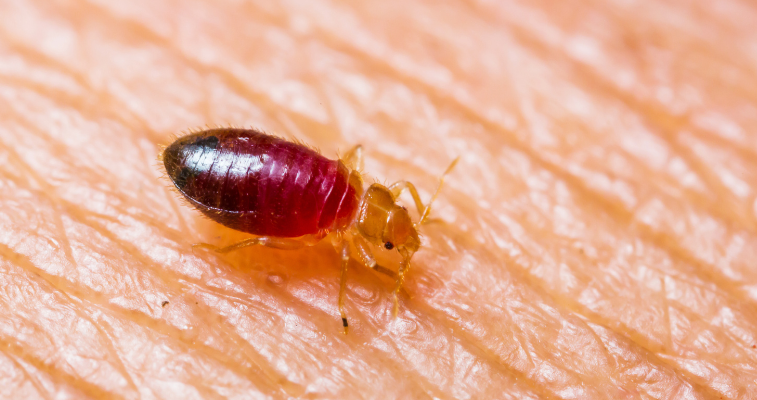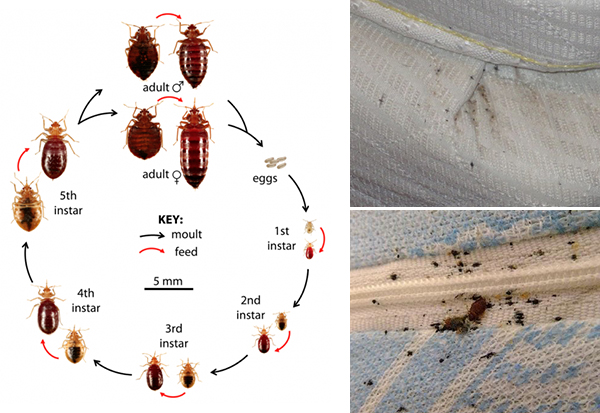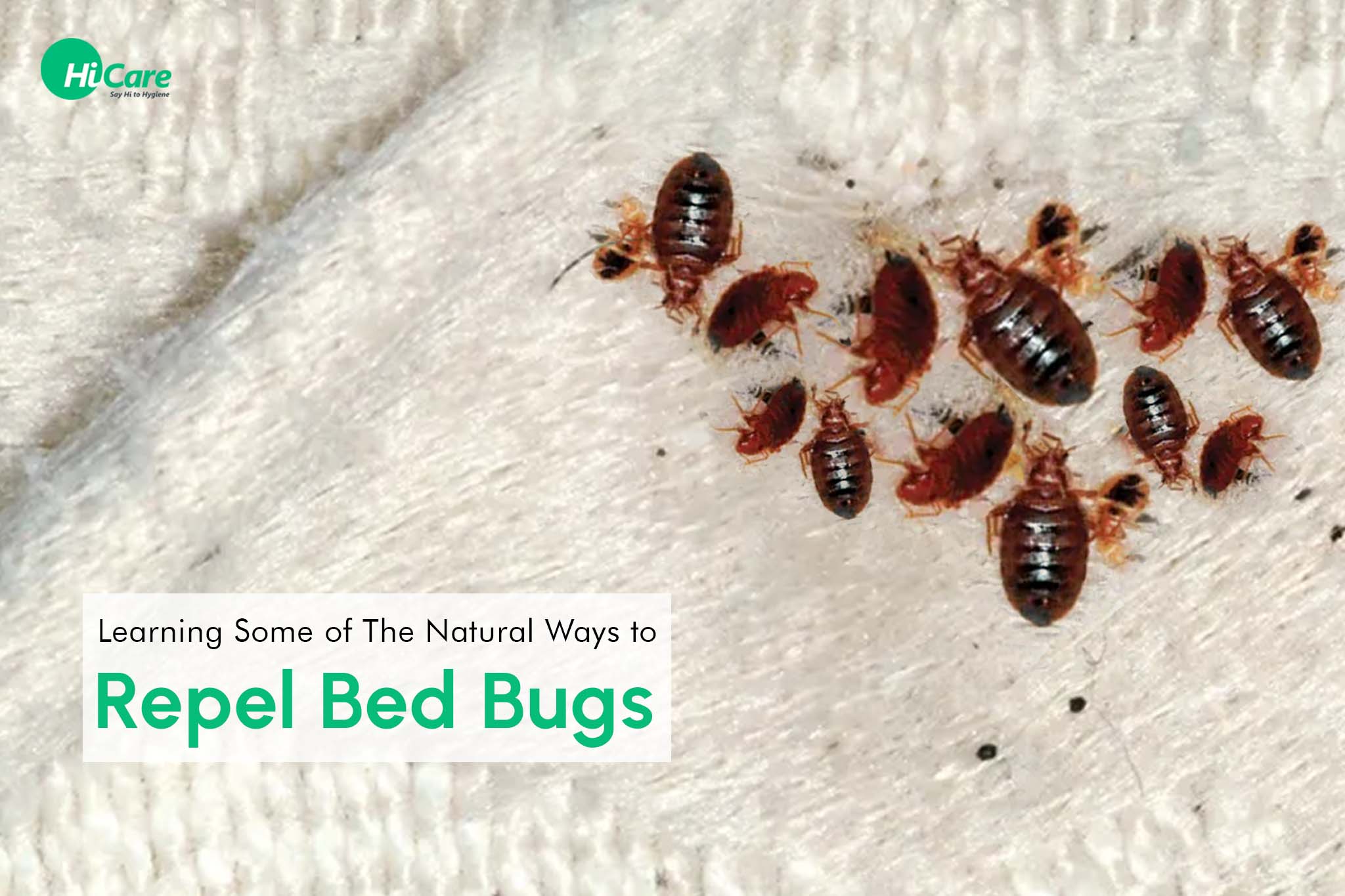To avoid getting bed bugs from someone, avoid bringing used furniture or clothing into your home. Inspect items before bringing them indoors, and regularly clean and vacuum your living space.
Bed bugs can be easily spread through infested items, so taking these precautions can help prevent an infestation in your home. Easily overlooked but incredibly frustrating, bed bugs are a common issue in many households. As you may already know, dealing with a bed bug infestation can be costly and time-consuming.
However, there are steps you can take to lower your risk of getting bed bugs from someone else. By following some simple guidelines, you can minimize the chances of bringing bed bugs into your home from someone else’s place. We’ll discuss a few practical tips to help you avoid getting bed bugs from someone and keep your living space bug-free.
Recognizing The Signs Of Bed Bugs
Visible Bed Bug Signs
Inspect your mattress, sheets, and furniture for clusters of tiny, reddish-brown bugs. Look for shed exoskeletons or dark spots on bedding.
Common Bed Bug Bite Symptoms
Watch for red, itchy welts on your skin, typically in a line or cluster. Keep an eye out for small bloodstains on your sheets.
Understanding How Bed Bugs Spread
Understanding how bed bugs spread is crucial in preventing an infestation. These tiny, blood-sucking parasites have a knack for hitchhiking their way into our homes and causing endless discomfort. In this section, we will delve into the transmission mechanisms and high-risk environments that contribute to the spread of bed bugs.
Transmission Mechanisms
1. Bedding and Clothing: Bed bugs are excellent climbers and travelers. They can easily move from one place to another by hitching a ride on your clothing, luggage, or even used furniture.
2. Public Spaces: Popular areas such as hotels, movie theaters, public transportation, and dormitories can be hotspots for bed bug activity. These insects can easily crawl onto your belongings when you come into contact with infested furniture or bedding.
3. Social Interactions: Bed bugs can spread through interpersonal contact. If you visit a friend or family member who unknowingly has a bed bug infestation, the creepy crawlies can latch onto your clothing and personal items, finding their way into your home.
High-risk Environments
1. Hotels and Motels: When staying in a hotel or motel, it is essential to be vigilant. Bed bugs can thrive in these environments due to the constant turnover of guests. Inspect the bed, mattress seams, and headboard upon arrival to avoid any unwanted companions.
2. Second-Hand Furniture: Pre-owned furniture is a potential source of bed bugs. Always inspect any used furniture thoroughly and consider treating it before bringing it into your home.
| 3. College Dormitories: | 4. Elderly Care Facilities: |
|---|---|
| Dormitories are often overcrowded, making it easy for bed bugs to spread from one dorm to another. | Shared living spaces in elderly care facilities can create the perfect breeding grounds for bed bugs. |
5. Public Transportation: Bus seats, train compartments, and airplane cabins are all potential areas where bed bugs can hitchhike. Be cautious and inspect seating areas before settling in.
6. Laundry Facilities: Shared laundry facilities can be an avenue for bed bug transmission. Ensure you are not using washers or dryers that have recently been infested, as these pests can easily relocate to your own clothing.
7. Luggage: Bed bugs can quickly infest your luggage when staying in an infested environment. Always use luggage stands and keep your bags elevated, away from the floor and potential bed bug hideouts.
8. Moving and Storage: Moving or storing your belongings can inadvertently expose them to bed bugs. Always inspect your items before and after any type of storage or relocation.
Preventing Bed Bug Infestation
To prevent bed bug infestations, be mindful of bringing in used furniture or clothing from unknown sources. Regularly inspect and vacuum your living space, including the mattress and baseboards. Minimize the risk of getting bed bugs from someone by being cautious while traveling and avoiding direct physical contact with potentially infested items.
Bed bugs are notorious for their ability to hitchhike and infest new spaces. Taking precautionary measures and bed bug-proofing your home can significantly reduce the chances of getting bed bugs from someone. Here, we’ll discuss the necessary steps to prevent bed bug infestations.
Precautionary Measures
To avoid bed bugs, it’s crucial to be proactive and follow simple precautionary measures. Taking these steps can protect you from inadvertently bringing bed bugs into your home:
- Inspect your luggage and belongings thoroughly before bringing them inside your home. Look out for any signs of bed bug activity such as live bugs, fecal stains, or eggs.
- When staying in hotels or similar establishments, place your luggage on elevated surfaces, away from beds, sofas, and other potential hiding spots for bed bugs.
- Consider using a luggage encasement or plastic bags to protect your belongings when traveling.
- Before purchasing second-hand furniture or clothing, inspect them carefully to ensure they are bed bug-free.
- Avoid bringing used mattresses or upholstered items into your home, as they have a higher risk of harboring bed bugs.
- Regularly wash and dry your clothes on high heat, as bed bugs can be killed at temperatures exceeding 120°F (49°C).
- Be cautious when borrowing or lending items, especially those that can’t be easily cleaned, as they can be carriers of bed bugs.
Bed Bug-proofing Your Home
Creating a bed bug-proof environment in your home is essential to prevent an infestation. Take the following measures to make your home less attractive to these pests:
- Seal cracks and crevices in walls, floors, and furniture to eliminate potential hiding spots for bed bugs.
- Install door sweeps and repair any damaged or loose-fitting windows to prevent these pests from entering.
- Use mattress and box spring encasements specifically designed to keep bed bugs out.
- Vacuum your home regularly, paying close attention to areas such as the mattress seams, bed frame, and furniture.
- Declutter your living space to minimize potential hiding spots for bed bugs.
- Consider placing interceptors or traps under the legs of your bed and furniture to detect and monitor any bed bug activity.
- If you suspect a bed bug infestation, seek professional help immediately to address the issue effectively.
By taking these precautionary measures and implementing bed bug-proofing strategies in your home, you can greatly minimize the risk of getting bed bugs from someone. Remember, prevention is key when it comes to these persistent pests.
What To Do If Exposed To Bed Bugs
If you suspect you have been exposed to bed bugs, it is crucial to take immediate action to prevent an infestation in your home.
Immediate Actions:
- Change and wash clothes in hot water.
- Vacuum your belongings and furniture.
- Inspect your luggage and belongings thoroughly.
Seeking Professional Help:
- Contact a pest control expert to inspect your home.
- Consider professional extermination services if needed.
Keeping Bed Bugs Away When Traveling
When traveling, take precautions to prevent bed bugs from hitching a ride back home with you. Bed bugs are excellent travelers, and they are often found in hotels, hostels, and even public transportation. By following some simple traveling tips, you can significantly reduce the chances of bringing bed bugs home. Be proactive and vigilant to ensure a bed bug-free vacation.
Bed Bug Inspection Checklist
Before settling into your accommodation, perform a thorough bed bug inspection. Use the following checklist to detect any signs of bed bugs:
- Check the mattress and box spring for live bed bugs, dark fecal spots, shell casings, or eggs.
- Inspect the headboard and bed frame for any signs of bed bug activity.
- Examine the upholstered furniture in your room for any indications of bed bugs.
- Inspect the luggage rack for potential bed bug hiding spots.
- Scan the crevices and seams of curtains, baseboards, and carpeting for any signs of bed bugs.
If you notice any evidence of bed bugs during your inspection, immediately request a different room or consider finding alternative accommodations. It’s crucial to be proactive in preventing bed bug infestations.

Credit: www.rentokil.com
Effectively Handling Secondhand Items
When acquiring secondhand items, especially furniture and clothing, it is crucial to adopt effective strategies to prevent the potential spread of bed bugs. Thorough inspection techniques and safe acquisition practices can help minimize the risk of introducing these pests into your living space.
Thorough Inspection Techniques
Prior to bringing any secondhand item into your home, it is essential to conduct a thorough inspection for signs of bed bugs. Use a flashlight to closely examine the seams, crevices, and folds of furniture, and pay attention to any dark spots or reddish-brown stains that may indicate the presence of bed bug excrement. Additionally, check for live bed bugs or shed skins, especially in the joints and edges of wooden furniture.
Safe Acquisition Practices
When purchasing secondhand items, opt for pieces that have been properly sealed or treated to eliminate any potential bed bug infestations. If buying used furniture, inquire about the seller’s pest control measures and ensure that they have been inspected and deemed free of bed bugs before the transaction. Avoid acquiring items from sources with a history of pest issues, as this could significantly reduce the risk of bringing bed bugs into your home.
Dealing With Bed Bugs In Shared Spaces
To prevent bringing bed bugs into shared spaces, always inspect luggage and clothing after travel. Avoid placing items on infested furniture, and use protective covers for mattresses and box springs. If bed bugs are suspected, promptly report and address the issue.
Regularly vacuum and launder bedding and personal items.
Community Living Precautions
Living in shared spaces increases the risk of bed bug exposure. “To prevent bed bugs: `
Addressing Infestations With Roommates
If you suspect bed bugs, communicate openly with roommates. “Take action promptly by: “Washing bedding and clothes in hot water `
:max_bytes(150000):strip_icc()/Bed-bug-control-tips-and-tricks-2656377-e580f433c55a4a98826e429753062084.jpg)
Credit: www.thespruce.com
Maintaining Vigilance For Bed Bug Prevention
Bed bugs are notorious pests that can quickly infest your home if you’re not careful. To keep these unwanted guests at bay, it’s essential to maintain constant vigilance and take proactive measures to prevent their entry and proliferation. In this section, we will discuss two key strategies to keep bed bugs out of your home: regular home inspections and the use of professional pest control services.
Regular Home Inspections
Regular home inspections are a crucial part of bed bug prevention. By being proactive and meticulous in checking your living space, you can catch any signs of a bed bug infestation early on, preventing it from becoming a full-blown problem. Here’s what you need to do to perform a thorough inspection:
- Start by examining your bedroom first, as bed bugs tend to prioritize this area due to their nocturnal feeding habits.
- Inspect your mattress and box spring for any signs of bed bugs. Look for dark spots, tiny eggs, shed exoskeletons, or even live bugs.
- Check your bed frame, headboard, and nightstands for any cracks or crevices where bed bugs might hide.
- Move on to other furniture, such as couches and chairs, paying close attention to seams and cushions.
- Don’t forget to inspect any rugs, curtains, or electrical outlets that could serve as hiding spots for these pests.
Professional Pest Control Services
While regular home inspections are a proactive step towards bed bug prevention, seeking the assistance of professional pest control services can provide an extra layer of protection. Pest control experts possess the knowledge, tools, and experience required to effectively eliminate bed bugs from your home. Here’s why professional pest control services are a worthwhile investment:
| Benefits of professional pest control services |
|---|
| Thorough inspection and identification of bed bug infestations. |
| Safe and effective application of appropriate treatments. |
| Targeted elimination of bed bugs in all their life stages. |
| Prevention strategies to minimize the risk of future infestations. |
| Peace of mind knowing that experts are handling the situation. |
When it comes to bed bug prevention, maintaining vigilance is key. Regular inspections of your home and enlisting the help of professional pest control services will significantly reduce the likelihood of a bed bug infestation. By staying proactive, you can take control of your living environment and ensure your home remains a bed bug-free zone.

Credit: www.domyown.com
Frequently Asked Questions On How To Not Get Bed Bugs From Someone?
How Can You Prevent Bed Bugs From Spreading?
To prevent bed bugs from spreading, avoid clutter, inspect secondhand items, wash bedding regularly, and vacuum frequently.
Are Bed Bugs Visible To The Human Eye?
Yes, bed bugs are visible to the human eye. They are small, reddish-brown insects that can be seen without magnification.
What Should You Do If You Suspect Bed Bugs?
If you suspect bed bugs, contact a professional pest control company for an inspection. Avoid trying to treat the infestation on your own.
Can Bed Bugs Be Transferred From Person To Person?
Yes, bed bugs can be transferred from person to person through close contact or by sharing items such as clothing or bedding.
Conclusion
To avoid the nightmare of dealing with bed bugs, it’s vital to take preventative measures and be cautious when sharing personal spaces with others. By following simple tips like inspecting your surroundings, using protective covers, and keeping your belongings separated, you can significantly reduce the risk of bed bug infestation.
Remember, prevention is always better than attempting to eradicate an infestation after the fact. Stay vigilant and take the necessary steps to protect yourself and your home from these pesky pests. Rest easy knowing you’ve taken the right precautions to not get bed bugs from someone.
Related posts:

I’m MD Tanvir, and I bring years of expertise gained from working closely with pest control companies to the forefront. My journey in the industry has inspired me to launch Bug Battler, a platform aimed at equipping people with the know-how to combat pests autonomously. Through Bug Battler, I aim to empower individuals with practical insights to tackle pest infestations effectively.

